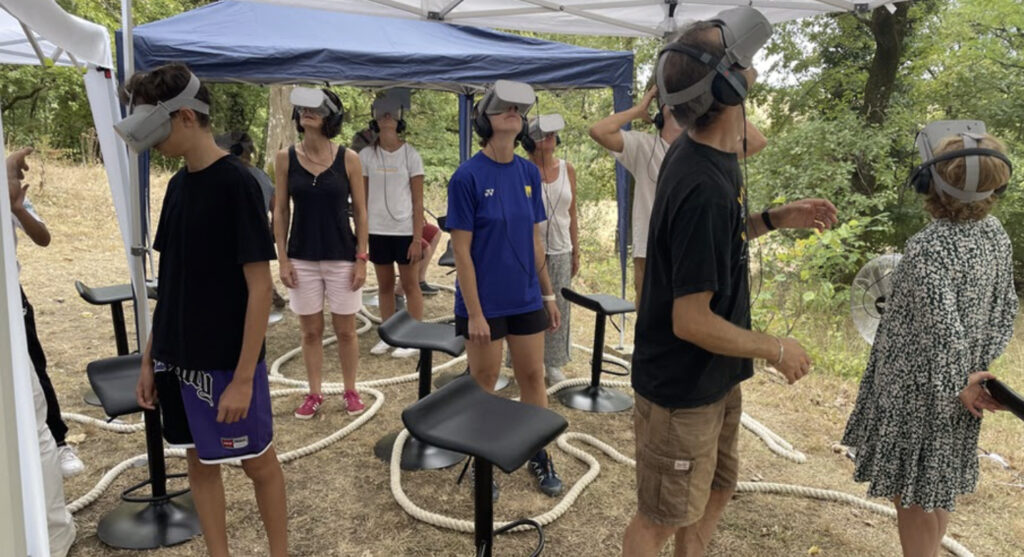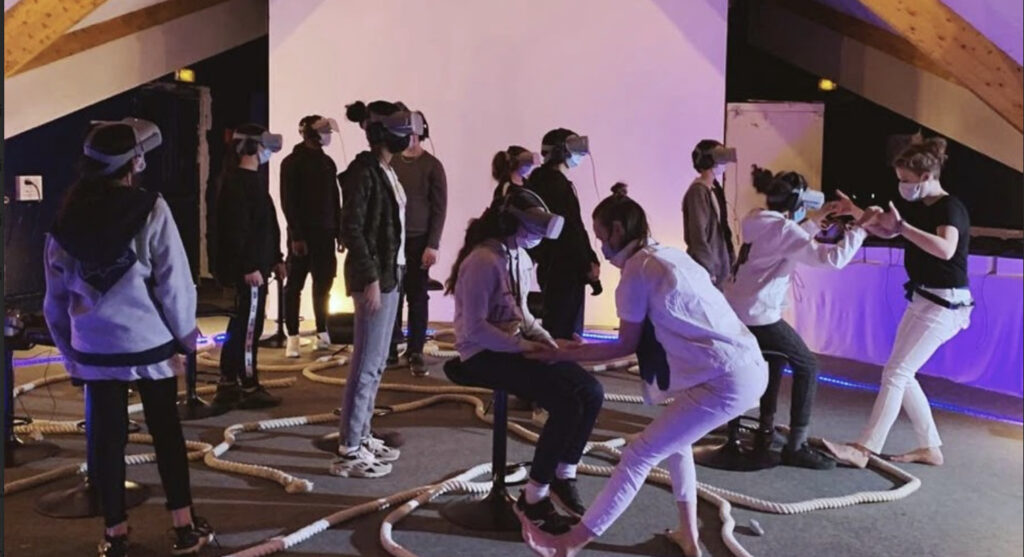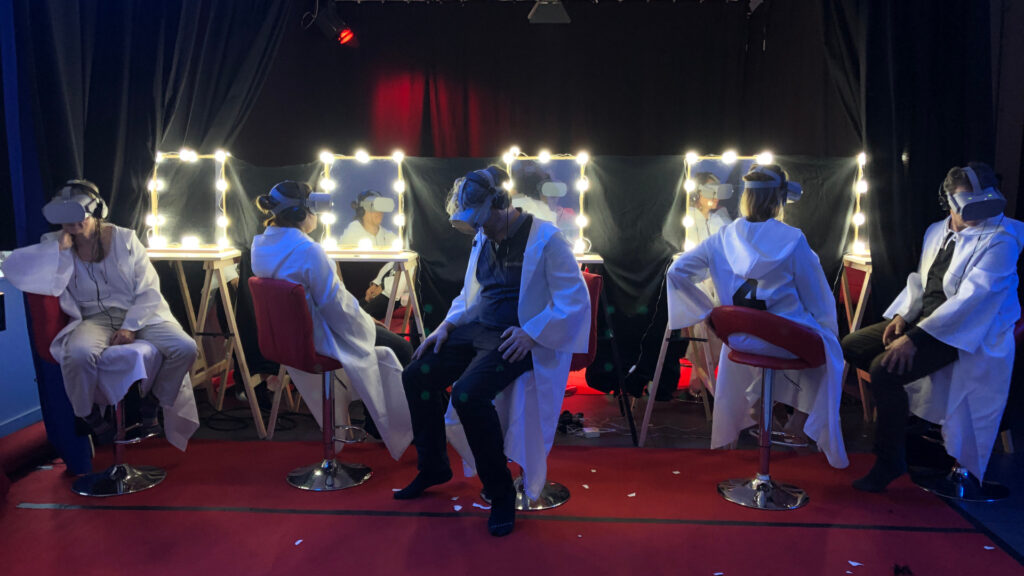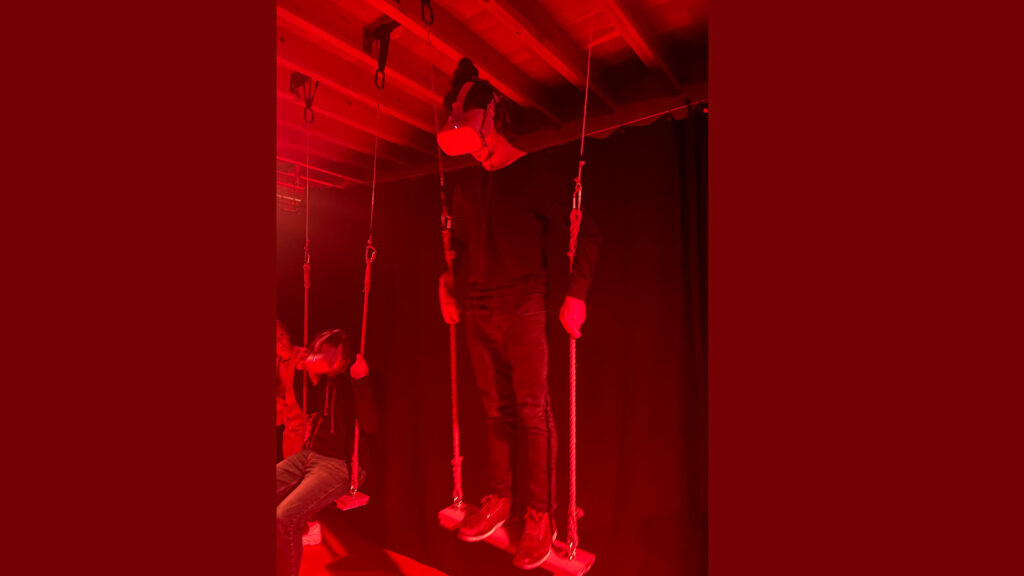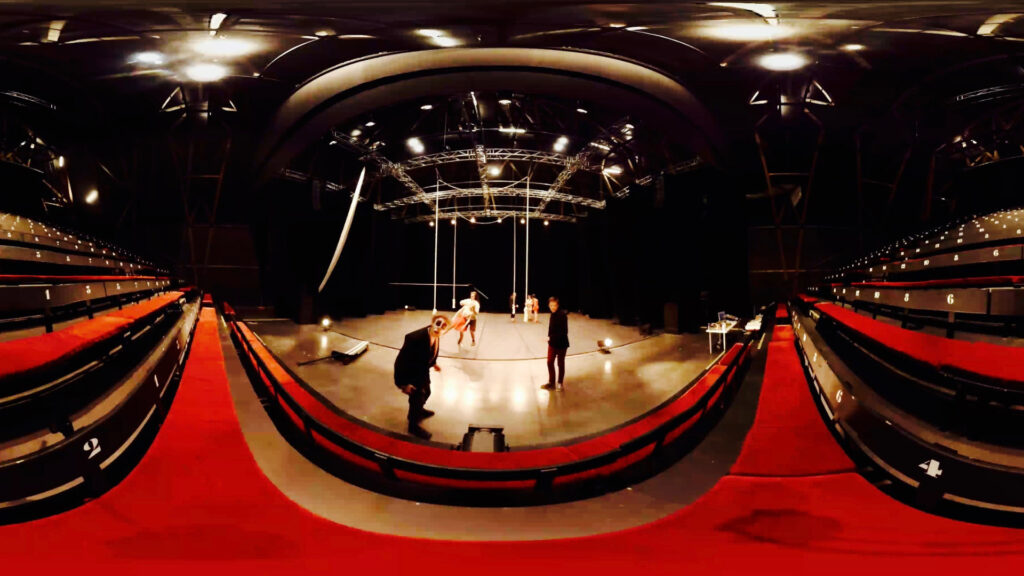Digital Business Models in Performing Arts – Part 3: Hybrid Business Models and Extended Reality Technologies in Performing Arts
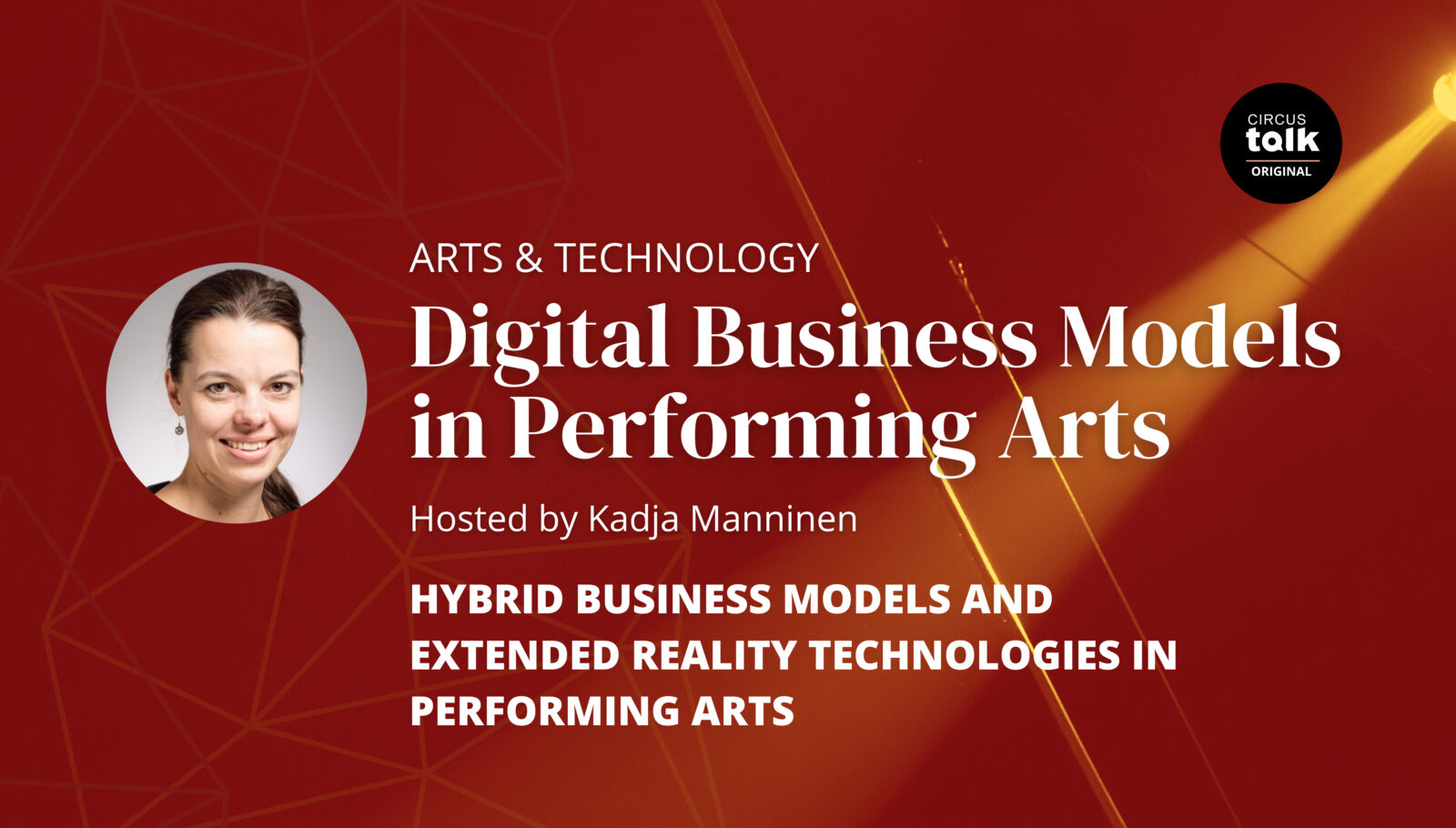
Embracing the Future: Hybrid Business Models and Extended Reality Technologies in Performing Arts
Whether we want it or not, the performing arts industry is currently undergoing a profound digital transformation, propelled by the recent global challenges it has faced. During the pandemic, performing arts organizations were compelled to make a swift “digital pivot” in order to adapt and continue engaging with audiences. However, despite the pandemic-time experimentation with digital technologies, many of these organizations have reverted back to traditional live performance-based business models as their primary focus. Nevertheless, it is crucial to acknowledge that the digital experimentation that took place during the pandemic has had a lasting impact on the industry. The embedding of digital technologies into performing arts organizations’ business models has opened up new possibilities and avenues for creative expression, audience engagement, and revenue generation. Thus, many organizations continue to embrace a hybrid approach that merges the best of both worlds.
As the performing arts industry moves forward, it will likely find a delicate balance between live performances and the incorporation of digital technologies. This evolution reflects the resilience and adaptability within the industry, where lessons learned during the pandemic continue to shape its trajectory. Ultimately, it is the dynamic interplay between the tangible immediacy of live performances and the potential of digital technologies that will pave the way for an exciting future in the performing arts. This blog delves into the realm of hybrid business models, with a particular focus on the use of extended reality (XR) technologies, exploring the benefits and advantages they can offer to artists, organizations, and audiences alike.
One of the key advantages of hybrid business models is their ability to expand reach and accessibility to a broader audience. By incorporating digital elements, such as livestreaming, on-demand platforms, or XR technologies, they can transcend geographical limitations. Audiences from around the world can experience live performances, workshops, or educational programs without the need for travel or their physical presence. This opens up new revenue streams and opportunities for performing artists and organizations to connect with diverse communities globally.
One good example of this type of hybridization is the London-based immersive, award-winning theater company Darkfield, who are specialized in the production of 360-degree binaural audio performances that typically take place in complete or partial darkness, inside repurposed shipping containers. When COVID-19 forced a halt to all live performance touring activities, Darkfield created a novel digital product entitledDarkfield Radio, which consisted of a series of immersive audio performances, to be experienced in people’s homes or easily accessible public spaces through a smartphone application and a pair of headphones. This meant that Darkfield’s performances were no longer tethered to specific physical locations, making them available to global online audiences.
Darkfield Radio was a pandemic-time success. The digital shows received more reviews than any other Darkfield performances had previously and sparked interest particularly among the XR community and the film festival industry. Indeed, Double, one of the early Darkfield Radio shows, was the first-ever audio-only experience to feature in the XR category of the prestigious Venice International Film Festival.

Post-pandemic, Darkfiled has skillfully continued to utilize digital performances to support its live shows. For example, Darkfield has used digital app-based performances to market live performances to potential international partners who are too far to attend in person and offer audiences the opportunity to experience digital performances in the context of live performances by handing out flyers with QR codes through which the digital offering could be accessed. In an interview that I conducted with Darkfield, producer Victoria Eyton described how the company’s future appeared increasingly hybrid:
“So, there are all these intersections of how we do both things [live and digital], but also there’s like the bit in the middle, hybridity, where we might have certain shows online, and then other versions of them in a physical place.”
The hybridization of business models can also offer audiences immersive experiences that challenge the traditional audience-performer relationship. Finnish circus artist Corinne Linder, founder of Fheel Concepts, a contemporary circus company specializing in immersive and sensorial performances, has found inspiration in her own life as a circus artist. Corinne’s journey began at the age of seven when she started practicing circus, and after completing her formal education in Finland, she went on to study at Le Lido circus school in Toulouse, France, with aerial silks as her specialty. However, destiny took an unexpected turn in 2016 when Corinne, while working as a circus artist, experienced a life-altering accident: a fall from a height of six meters.
This tragic incident forced her to stop all performing activities, leaving her unable to utilize her most cherished instrument: her own body. This difficult period of introspection granted Corinne the opportunity to reevaluate the trajectory of her career. Driven by her passion for circus arts, Corinne decided to return to university and pursue a study program in arts management. As part of her degree, she undertook an internship in New York, where she had the privilege of collaborating with the creative technologist and artist Emily Baltz. Emily’s expertise lies in crafting immersive experiences that combine food and digital technologies.
In the course of their collaboration, Corinne discovered the realm of XR, the immersion achieved through the use of virtual reality (VR) in particular leaving a lasting impression on her. Witnessing the vast potential of XR technologies to revolutionize live performances, Corinne felt impressed like never before. As a result, she went on to establish her own company, one that would blend contemporary circus with cutting-edge digital art. Through this fusion, Fheel Concepts was born, a venture dedicated to pushing the boundaries of contemporary circus and delivering unique live and digital experiences to audiences.
To date, Fheel Concepts has created two performances that showcase its innovative approach. The first is “Hold On,” a 15-minute 360° video in virtual reality that immerses participants in the mesmerizing world of an aerial acrobat, inspired by Corinne Linder’s own life and, following her life-changing accident, her wish to give audiences her place as a circus artist on stage. Additionally, Fheel Concepts presents “The Ordinary Circus Girl,” a full-length show that merges the physicality of circus performance with transformative VR technologies. This production expands on the company’s first performance, offering audiences an opportunity to act as circus artists, witnessing the fusion of artistry and the immersive capabilities of virtual reality. The immersion created through VR technologies is further augmented by the use of sensory cues that engage all five major senses: touch, smell, sight, hearing, and taste, to envelop the audience in a multi-sensory immersion. Both experiences are featured in the programme of Festival Avignon Off this summer.
Fheel Concepts’ shows break free from traditional spectatorship by inviting audiences to participate as circus artists on stage and creating new immersive virtual worlds that are not restricted by space or time. From a business model perspective, the fusion of traditional live performance with XR technologies offers a compelling proposition. While rooted in the established model of touring live shows, this approach harnesses the transformative power of XR technologies to reshape the very essence of the audience experience. By integrating the roles of performer and spectator, it introduces a level of interactivity and immersion previously unexplored.
One of the notable advantages of incorporating XR experiences into touring productions is the financial benefits it brings. With the utilization of VR, the need for extensive physical infrastructure and resources is greatly reduced. This translates into more cost-effective touring, as expenses related to staff, logistics, and cargo are minimized. Furthermore, the flexibility of VR allows performances to be showcased in venues that may not otherwise be suitable for traditional large-scale circus productions, further expanding the reach and accessibility of the performances.
However, it goes without saying that there are some notable challenges involved in creating hybrid business models that incorporate XR technologies. The key one lies in the significant costs associated with their implementation, coupled with a lack of technology expertise within the performing arts industry. The financial burden of XR productions can be considerable, making it difficult to secure sufficient funding to cover all the related expenses. Additionally, finding experts with the necessary skills and knowledge to collaborate on such projects can prove to be a daunting task.
In my Ph.D. research which focused on digital business models within the performing arts sector, I have discovered that university partnerships often present the most viable path for performing arts organizations to venture into XR experimentation. Many universities possess excellent facilities for motion or volumetric capture of live performances and the software needed for integrating them into virtual environments. Furthermore, universities are often enthusiastic about engaging in creative research partnerships and can offer their technology expertise and financial and human resources to support new and innovative projects.
As the performing arts industry continues to evolve, the adoption of hybrid business models provides an interesting pathway for artists and organizations to thrive in the digital era. Through strategic collaborations and a willingness to explore the potential of XR technologies, performing arts organizations can overcome the financial barriers and technological limitations they face. By forging cross-sector partnerships and tapping into their expertise, the performing arts industry can unlock new creative possibilities, forging a future where the physical and the digital intertwine.
Read the complete “Digital Business Models in Performing Arts” series here.
All photos are courtesy of author.
Editor's Note: At StageLync, an international platform for the performing arts, we celebrate the diversity of our writers' backgrounds. We recognize and support their choice to use either American or British English in their articles, respecting their individual preferences and origins. This policy allows us to embrace a wide range of linguistic expressions, enriching our content and reflecting the global nature of our community.
🎧 Join us on the StageLync Podcast for inspiring stories from the world of performing arts! Tune in to hear from the creative minds who bring magic to life, both onstage and behind the scenes. 🎙️ 👉 Listen now!
